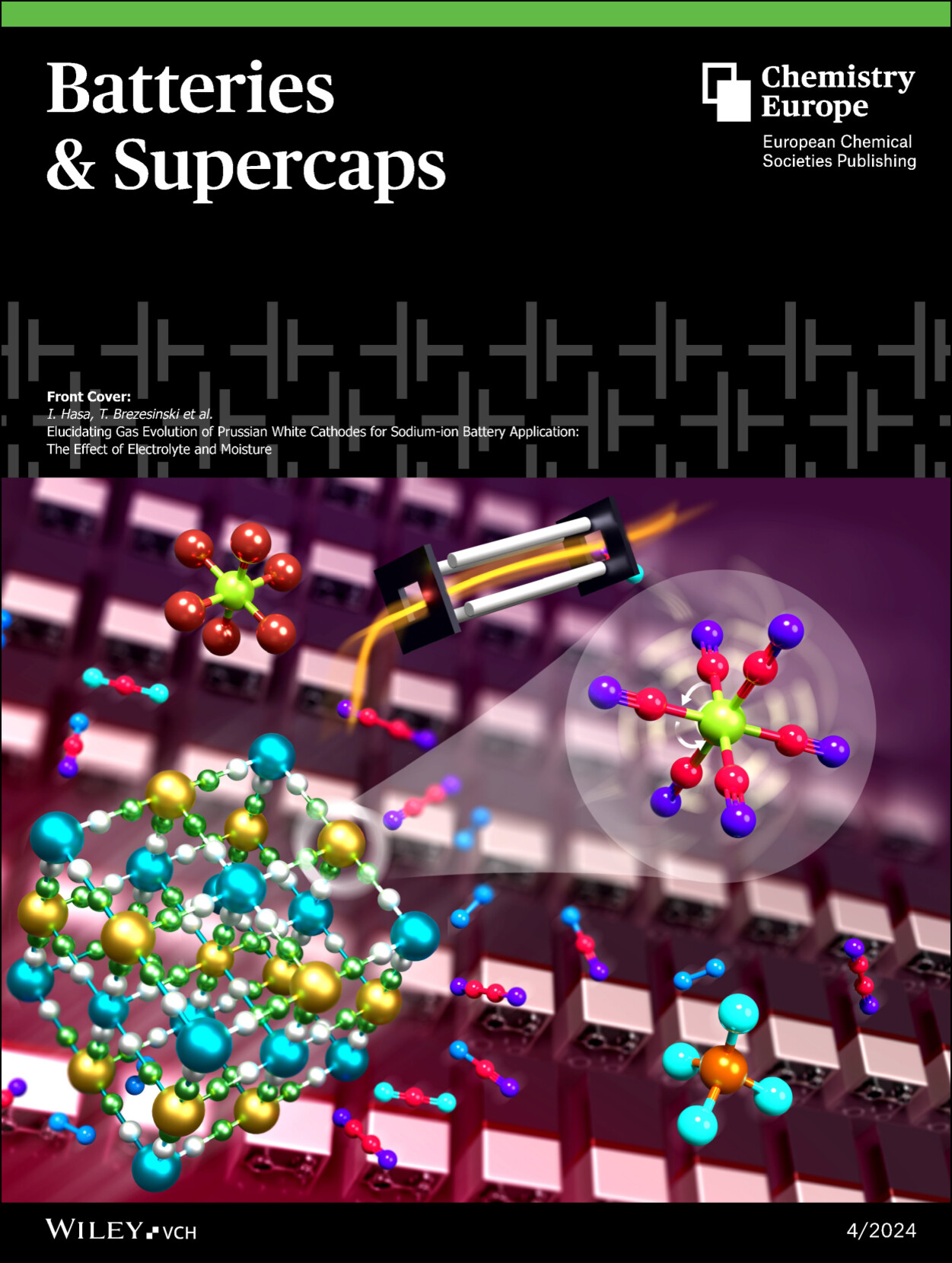Exploring the possibility of aluminum plating/stripping from a non‐corrosive Al(OTf)3‐based electrolyte
IF 5.1
4区 材料科学
Q2 ELECTROCHEMISTRY
引用次数: 0
Abstract
Rechargeable aluminum batteries offer a promising candidate for energy storage systems, due to the Aluminum (Al) abundance source. However, the development of non‐corrosive electrolytes, facilitating reversible Al plating/stripping, is a critical challenge to overcome. This study investigates the feasibility of aluminum plating on a platinum substrate using a non‐corrosive trifluoromethanesulfonate (Al(OTf)3)/N‐methylacetamide (NMA)/urea electrolyte. This electrolyte was proposed earlier as an alternative chloroaluminate‐based ionic liquid, but Al plating/stripping was not proved. In this work, various techniques, including cyclic voltammetry, scanning electron microscope/energy‐dispersive X‐ray spectroscopy, operando optical microscopy and electrochemical quartz crystal microbalance (EQCM), gas chromatography (GC), and X‐ray photoelectron spectroscopy were employed to understand the Aluminum plating and stripping behavior. While cyclic voltammetry indicates redox activity on Pt, further analysis reveals no significant plating. Instead, hydrogen evolution reaction, promoted by the water‐residue, dominates the observed current, confirmed by operando microscopy and GC measurements. EQCM studies suggest the concurrent adsorption/desorption of Al(OH)2+ and Al3+ ions on the Pt electrode. Further drying the electrolyte reduces the hydrogen evolution, but plating of metallic Al remains elusive. These findings highlight the need for further optimization of the electrolyte composition to achieve efficient Al plating/stripping.探索用无腐蚀性的 Al(OTf)3 基电解质电镀/剥离铝的可能性
由于铝(Al)来源丰富,可充电铝电池为储能系统提供了一个前景广阔的候选方案。然而,如何开发无腐蚀性的电解质,促进铝的可逆电镀/剥离,是需要克服的关键挑战。本研究调查了使用非腐蚀性三氟甲磺酸盐(Al(OTf)3)/N-甲基乙酰胺(NMA)/尿素电解质在铂基板上镀铝的可行性。这种电解质早先曾被提议作为氯铝酸盐离子液体的替代品,但铝的电镀/剥离并未得到证实。这项研究采用了多种技术,包括循环伏安法、扫描电子显微镜/能量色散 X 射线光谱法、操作光学显微镜和电化学石英晶体微天平 (EQCM)、气相色谱法 (GC) 以及 X 射线光电子能谱法,以了解铝的电镀和剥离行为。虽然循环伏安法显示了铂上的氧化还原活动,但进一步的分析显示并没有明显的电镀现象。相反,在水残留物的促进下,氢进化反应主导了观察到的电流,这一点已通过操作显微镜和气相色谱测量得到证实。EQCM 研究表明,Al(OH)2+ 和 Al3+ 离子同时在铂电极上吸附/解吸。电解质的进一步干燥减少了氢的演化,但金属铝的电镀仍然难以实现。这些发现凸显了进一步优化电解质成分以实现高效铝电镀/剥离的必要性。
本文章由计算机程序翻译,如有差异,请以英文原文为准。
求助全文
约1分钟内获得全文
求助全文
来源期刊

Batteries & Supercaps
Multiple-
CiteScore
8.60
自引率
5.30%
发文量
223
期刊介绍:
Electrochemical energy storage devices play a transformative role in our societies. They have allowed the emergence of portable electronics devices, have triggered the resurgence of electric transportation and constitute key components in smart power grids. Batteries & Supercaps publishes international high-impact experimental and theoretical research on the fundamentals and applications of electrochemical energy storage. We support the scientific community to advance energy efficiency and sustainability.
 求助内容:
求助内容: 应助结果提醒方式:
应助结果提醒方式:


